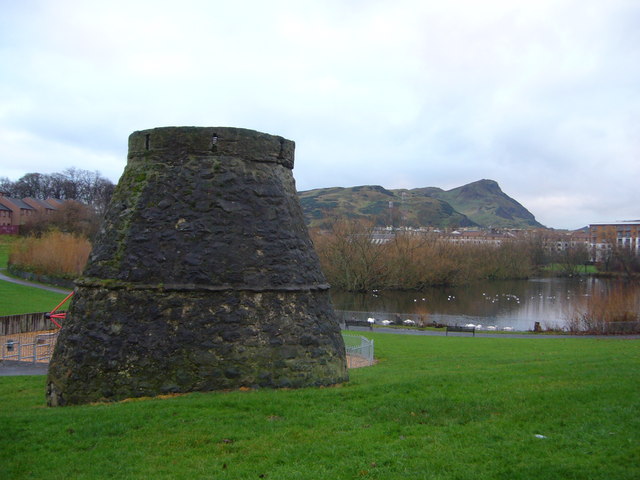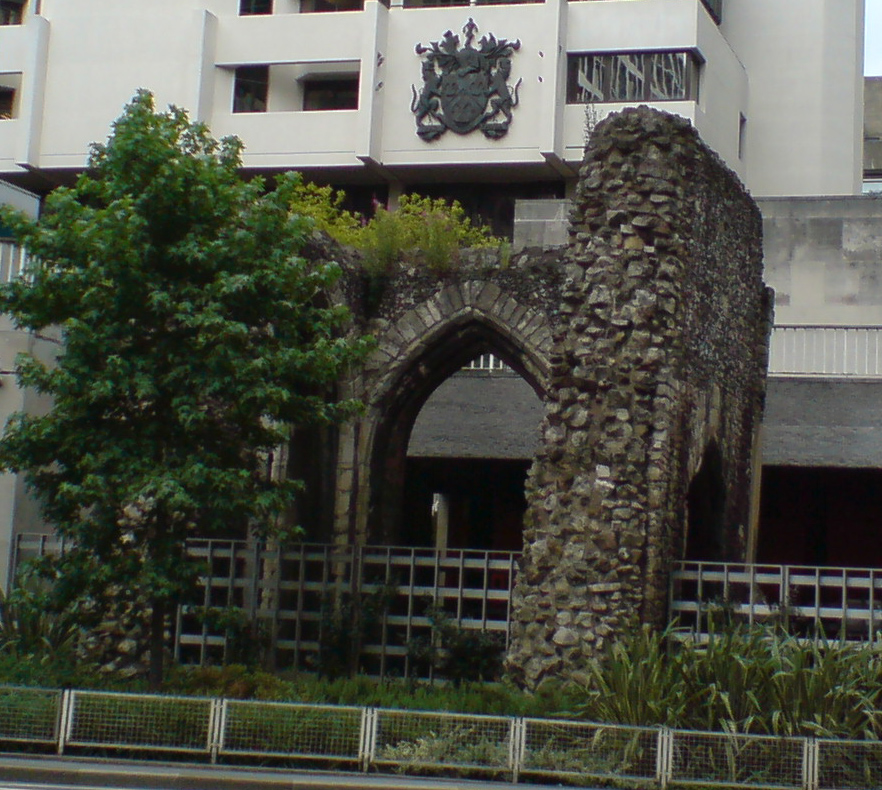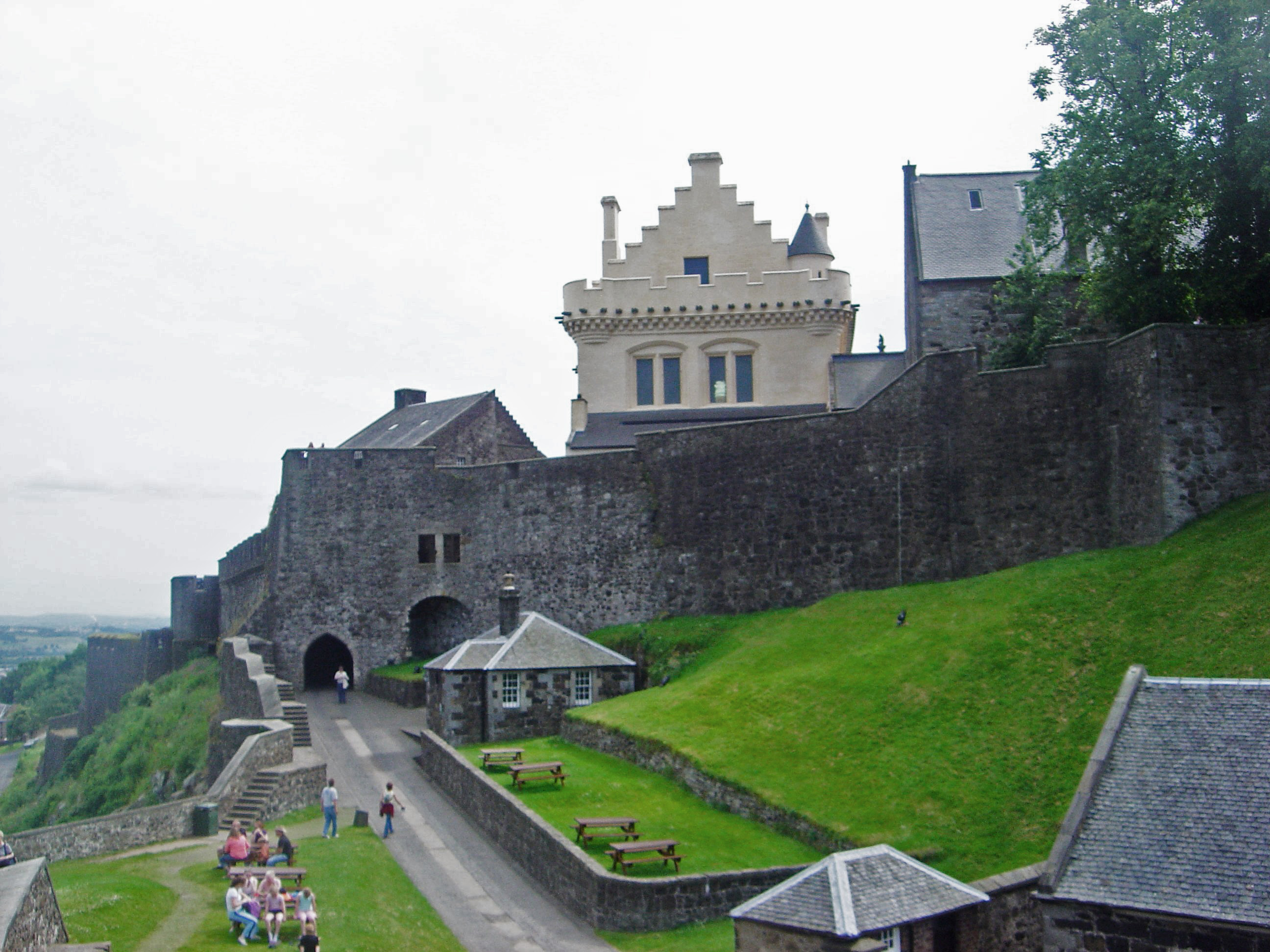|
Restalrig
Restalrig ( ) is a small residential suburb of Edinburgh, Scotland (historically, an estate and independent parish). It is located east of the city centre, west of Craigentinny and to the east of Lochend, Edinburgh, Lochend, both of which it overlaps. Restalrig Road is the main route through the area, running from London Road, at Jock's Lodge, to Leith Links. It is in the ward of Lochend. History and buildings The place name ''Restalrig'' means ''ridge of the miry land'' (from ''lestal'', a northern dialect term meaning ''mire'' and ''rig'', Scots and northern English meaning a linear field or land-holding). It is first mentioned as Lestalric in 1165, when Edward de Lestalric built a church on the site. The church was completed in 1210 by his grandson, Sir Thomas de Lestalric. The area, over the following centuries, is variously named as Lestalryk, Restalric or Rastalrig. The Normans, Norman noble family the de Lestalrics were the ancient landowners in the area (including ne ... [...More Info...] [...Related Items...] OR: [Wikipedia] [Google] [Baidu] |
Clan Logan
Clan Logan is an ancient Scottish clan with branches originating in the Scottish Highlands, Highlands and Scottish Lowlands, Lowlands of Scotland. From the Highlands came the Logan or Loban clan. The Lowlands, however, included the Logans of that Ilk (the Chiefly line); the Barons of Restalrig, Restalrig, the Logans from Ayrshire, the Lobbans from Banff, and many others. The clan currently does not have a Scottish chief, chief recognized by Lord Lyon King of Arms but is actively searching for one. The family will hold a convention in April 2025 to select a Commander of the Logan Family to continue the search for a chief. History The surname ''Logan'' likely comes from the Scottish Gaelic word ''lagan'' or ''laggan'', the diminutive form of the Gaelic word for hollow, ''lag''. Thus, the name refers to a low lying place such as a valley or glen. When and where the name emerged is unknown. It is likewise unknown who first used the Logan surname. The first one documented was Adam ... [...More Info...] [...Related Items...] OR: [Wikipedia] [Google] [Baidu] |
Siege Of Leith
The siege of Leith ended a twelve-year encampment of French troops at Leith, the port near Edinburgh, Kingdom of Scotland, Scotland. French troops arrived in Scotland by invitation in 1548. In 1560 the French soldiers opposed Scottish supporters of Scottish Reformation, religious reformation, and an English army arrived to besiege the French garrison at Leith. The town was not taken by force and the French troops finally left peacefully under the terms of a treaty signed by Scotland, Kingdom of England, England and France.Knight, p. 120 Background The Auld Alliance and Reformation Scotland and France had long been allies under the "Auld Alliance", first established in the 13th century. However, during the 16th century, divisions appeared between a pro-French faction at Court and Protestant reformers. The Protestants saw the French as a Catholic influence and, when conflict broke out between the two factions, called on English Protestants for assistance in expelling the French ... [...More Info...] [...Related Items...] OR: [Wikipedia] [Google] [Baidu] |
Lochend Castle
Lochend House, also known as Restalrig Castle Coventry, Martin (2001) ''The Castles of Scotland''. Goblinshead. p.300 and Lochend Castle, is an occupied house, incorporating the remains of a 16th-century L-plan tower house, in Edinburgh, Scotland. It is located in the Lochend area, about east of Edinburgh Castle. The house is protected as a category B listed building. History The original castle was built on lands originally belonging to the Lestalric family, but which had passed to the Logan family of Restalrig early in the 14th century. That family retained possession until forfeited for their part in the Gowrie conspiracy against King James VI. The castle was burned by William Gilmour of the Inch at that time. Sir Robert Logan was the last member of the family to own the property. Thereafter the property was in the hands of Arthur Elphinstone, 6th Lord Balmerino, from 1704. He was executed in London for his part in the Jacobite rising of 1745, having been captured ... [...More Info...] [...Related Items...] OR: [Wikipedia] [Google] [Baidu] |
Perkin Warbeck
Perkin Warbeck ( – 23 November 1499) was a pretender to the English throne claiming to be Richard of Shrewsbury, Duke of York, who was the second son of Edward IV and one of the so-called "Princes in the Tower". Richard, were he alive, would have been the rightful claimant to the throne, assuming that his elder brother Edward V was dead and that he was Legitimacy (family law), legitimate—a point that had been previously contested by his uncle, King Richard III. Due to the uncertainty as to whether Richard had died (either of some natural cause or having been murdered in the Tower of London) or whether he had somehow survived, Warbeck's claim gained some support. Followers may have truly believed Warbeck was Richard or may have supported him simply because of their desire to overthrow the reigning king, Henry VII of England, Henry VII, and reclaim the throne. Given the lack of knowledge regarding Richard's fate, and having received support outside England, Warbeck emerged as ... [...More Info...] [...Related Items...] OR: [Wikipedia] [Google] [Baidu] |
Jock's Lodge
Jock's Lodge is an area of Edinburgh, Scotland. It centres on the junction of London Road and Willowbrae Road (part of the A1 trunk route to London), Portobello Road and Restalrig Road South (Smokey Brae) and is an alternative name for the Meadowbank / Piershill area. Restalrig village lies to its north. The name is mentioned, as ''Jokis Ludge'', in John Nicoll's diary in 1650. A sasine in 1736 refers to "the Bleugowns Lodge commonly called Jocks Lodge". It is recorded that the Bluegowns, the king's bedesmen, were called by themselves and others ''Jockies''. Thus the name of their house was ''Jockies Lodge''. The area is dominated by civil service office blocks, St Margaret's House and Meadowbank House, which were constructed in the early-1970s on the site of the St Margaret's railway locomotive depot, which was primarily for steam locomotives. From 2008, St Margaret's House has been leased to Edinburgh Palette, a registered charity which provides some 200 affordable stud ... [...More Info...] [...Related Items...] OR: [Wikipedia] [Google] [Baidu] |
Edinburgh East (UK Parliament Constituency)
Edinburgh East was a burgh constituency of the House of Commons of the Parliament of the United Kingdom. It elected one Member of Parliament (MP) by the first past the post system of election. It existed from 1885 to 1997 and from 2005 to 2024. Further to the completion of the 2023 Periodic Review of Westminster constituencies, the seat was expanded to include the town of Musselburgh. As a consequence, it reverted to the name of Edinburgh East and Musselburgh used from 1997 to 2005. Boundaries Edinburgh East was one of five constituencies covering the City of Edinburgh council area. All were entirely within the city council area. Prior to the 2005 general election, the city area was covered by six constituencies, with Edinburgh East and Musselburgh straddling the boundary with the East Lothian council area. 1885–1918: The municipal wards of Broughton, Calton, and Canongate of the burgh of Edinburgh, and so much of St. Leonard's ward as lies to the north of a line ... [...More Info...] [...Related Items...] OR: [Wikipedia] [Google] [Baidu] |
William Drury
Sir William Drury (2 October 152713 October 1579) was an English statesman and soldier. Family William Drury, born at Hawstead in Suffolk on 2 October 1527, was the third son of Sir Robert Drury (c. 1503–1577) of Hedgerley, Buckinghamshire, and Elizabeth Brudenell, of Chalfont St Peter, Buckinghamshire. He was the grandson of another Sir Robert Drury (c. 1456–2 March 1535), Speaker of the House of Commons in 1495. He was a brother of Sir Robert Drury (1525–1593) and Sir Drue Drury (1531/2–1617). Career Drury was educated at Gonville College, Cambridge. Fighting in France, Drury was taken prisoner in 1544; then after his release, he helped Lord Russell, afterwards Earl of Bedford, to quell a rising in Devonshire in 1549, but he did not come to the front until the reign of Elizabeth I. In 1554 he sat as Member of Parliament for Chipping Wycombe. Berwick and Scotland In 1559, he was sent to Edinburgh to report on the condition of Scottish politics, and five ... [...More Info...] [...Related Items...] OR: [Wikipedia] [Google] [Baidu] |
Craigentinny
Craigentinny is a suburb in the north-east of Edinburgh, Scotland, east of Restalrig and Lochend. Its name may be a corruption of the Gaelic ''Creag an t-Sionnaich'', meaning "the fox's rock". History Previously moorland, the first major house was built shortly after 1604. This house, Craigentinny, gives its name to the wider area. It was built by James Nisbet of the Nisbet family associated more strongly with the Dean area of the city, as the occupants of Dean House. The land was bought from the Logan family of Restalrig. Through the Nisbet family it passed to John Nisbet, Lord Dirleton around 1680. Through Lord Dirleton it passed to the Scott-Nisbets. After the death of John Scott-Nisbet in 1765 it was bought by a William Miller (1722–99), a wealthy seedsman and Quaker, living on the Canongate, who already owned property in the Craigentinny and Fillyside areas. William's only surviving son was with his third wife Martha Rowson: William Henry Miller (MP) (1789-1848) (who ... [...More Info...] [...Related Items...] OR: [Wikipedia] [Google] [Baidu] |
Lochend, Edinburgh
Lochend is a mainly residential suburb of Edinburgh, the capital of Scotland. It is named after Lochend Castle and the adjacent Lochend Loch, located in the western part of Restalrig, approximately two miles from Edinburgh city centre. The suburb consists largely of a 1930s public housing estate, and is bounded on the west by Easter Road. Lochend Loch is fed from underground springs. With no outlet stream, it was once used for a piped water supply to Leith but was partially filled in the 1960s to reduce water depth for safety reasons, and is now fenced and partly overgrown, providing a wildlife area. It forms a central feature of Lochend Park. Nearby, Lochend Castle was largely demolished in the 16th century, but surviving elements of it form part of the 19th century Lochend House. A 16th century beehive doocot, associated with the castle, stands in Lochend Park. James IV of Scotland came to the Lochend to hunt wildfowl in September 1507, and four men were paid to row a boa ... [...More Info...] [...Related Items...] OR: [Wikipedia] [Google] [Baidu] |
Leith
Leith (; ) is a port area in the north of Edinburgh, Scotland, founded at the mouth of the Water of Leith and is home to the Port of Leith. The earliest surviving historical references are in the royal charter authorising the construction of Holyrood Abbey in 1128 in which it is termed ''Inverlet'' (Inverleith). After centuries of control by Edinburgh, Leith was made a separate burgh in 1833 only to be merged into Edinburgh in 1920. Leith is located on the southern coast of the Firth of Forth and lies within the City of Edinburgh council area; since 2007 Leith (Edinburgh ward), it has formed one of 17 multi-member Wards of the United Kingdom, wards of the city. History As the major port serving Edinburgh, Leith has seen many significant events in Scottish history. First settlement The earliest evidence of settlement in Leith comes from several archaeological digs undertaken in The Shore, Leith, The Shore area in the late 20th century. Amongst the finds were medieval wharf ... [...More Info...] [...Related Items...] OR: [Wikipedia] [Google] [Baidu] |
James IV Of Scotland
James IV (17 March 1473 – 9 September 1513) was List of Scottish monarchs, King of Scotland from 11 June 1488 until his death at the Battle of Flodden in 1513. He inherited the throne at the age of fifteen on the death of his father, James III of Scotland, James III, at the Battle of Sauchieburn, following a rebellion in which the younger James was the figurehead of the rebels. James IV is generally regarded as the most successful of the House of Stuart, Stewart monarchs of Scotland. He was responsible for a major expansion of the Royal Scots Navy, Scottish royal navy, which included the founding of two royal dockyards and the acquisition or construction of 38 ships, including the ''Great Michael'', the largest warship of its time. James was a patron of the arts and took an active interest in the law, literature and science. With his patronage the Chepman and Myllar Press, printing press came to Kingdom of Scotland, Scotland, the University of Aberdeen and the Royal College o ... [...More Info...] [...Related Items...] OR: [Wikipedia] [Google] [Baidu] |
Leith Links
Leith Links is the principal open space within Leith, the docks district of Edinburgh, Scotland. This public park is divided by a road into two main areas, a western section and an eastern section, both being largely flat expanses of grass bordered by mature trees. Historically it covered a wider area extending north as far as the shoreline of the Firth of Forth. This area of grass and former sand-dunes was previously used as a golf links. Current uses The west section of the park contains children's play areas, football pitches and, in the north-west corner, and tennis and pétanque, petanque courts. There are also three disused bowling greens due to be redeveloped into a new activity centre and community space. In the east section an informal cricket pitch has existed since 1826. It is used by Leith Franklin Academicals Beige cricket club which, taking its name from Benjamin Franklin, was established in 1852 as the Leith Franklin cricket club. The club has a clubhouse outsid ... [...More Info...] [...Related Items...] OR: [Wikipedia] [Google] [Baidu] |







